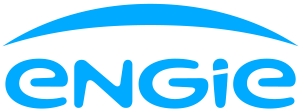Veuillez accepter les cookies "marketing" pour voir cette vidéo.
Digital sufficiency, a global challenge
The number of connected objects - primarily computers, smartphones, but also all the connected objects of everyday life (ioTs), such as thermostats, connected cars and industrial sensors - has risen from 15 billion in 2015 to 42 billion in 2022, to the point where they represent nearly 10% of the world's electricity consumption. A figure that continues to rise... The manufacture and electrical consumption of this equipment significantly contribute to global greenhouse gas emissions. The challenge of using digital technology in a responsible and reasoned manner is therefore undeniably major.
Switching off chargers when they’re not in use, extending the life of equipment and repairing it when possible... we are all familiar with eco-friendly practices, and people are gradually becoming aware of the need for more responsible, more sustainable consumption of digital technology. Green IT is becoming a necessity.
You cannot have the energy revolution without a digital revolution! For the digital revolution to be ecologically sustainable in the long term, it needs technical solutions provided by the energy revolution. Just as digital technologies contribute to the energy revolution. Artificial intelligence or the Internet of Things contribute to the decarbonisation of human activities. This is the principle steering our purpose statement, the collective goal we have here at ENGIE.
ENGIE is striving both to decrease its own consumption in respect of digital technology and make the best possible use of digital technologies to invent a new low-carbon world.
Working with our clients to make digital sufficiency a sustainable commitment
Since the very beginning, ENGIE has set itself the mission of accelerating the transition to a carbon-neutral world, a goal initially manifested in our offerings for our clients.
Basically, we are working to improve the energy performance of our clients’ data centres, the electricity consumption of which could account for 11% of the world’s consumption by 2030.
For example, in the Netherlands, ENGIE has designed and constructed a particularly innovative data centre for Interxion, one of Europe’s largest suppliers of data centre colocation services. Besides supplying it with 100% renewable energy, ENGIE has developed a remarkable cooling system, called ATES (cooling through aquifer thermal energy storage).
In the United Kingdom, ENGIE has been involved in designing Merlin, the new Capgemini data centre in Swindon. Merlin is one of the most virtuous and eco-efficient data centres in the world from an environmental point of view. Operating at its current capacity, its annual CO2 emissions are 3,950 tonnes less than those of a classic design. If all British data centres were as efficient, the reduction in CO2 emissions would be the equivalent of all the country’s transport-related emissions. In addition, over 90% of Merlin’s components are reusable and recyclable.
We put long-term contracts in place with all our clients with the intention of directly linking a renewable production capacity (solar, wind, hydro) with their data centres.
ENGIE is also aiming to support the digital technology giants in their transition to digital sufficiency. How? By providing them with green electricity. In September 2019, Microsoft and ENGIE announced the signature of a contract whereby ENGIE in Texas would produce and supply 230 MW of solar- and wind-generated electricity, bringing Microsoft’s renewable energy capacity up to over 1,900 MW. This contract also provides for the implementation of Darwin, the digital data management platform developed by ENGIE with the assistance of Microsoft Azure, the Intelligent Cloud. Darwin will help to optimise the performance of ENGIE’s wind, solar and hybrid plants worldwide.
ENGIE is transforming its infrastructure using a Green IT approach
We are applying what we are doing for our clients to our own infrastructure. For over five years, the ENGIE teams have been working to reduce the environmental footprint of the Group’s data centres in three major ways:
- pooling and consolidating the IT equipment in data centres to reduce the use of primary hosting resources,
- extending server lifecycles to increase the amortisation period and reducing the quantity of carbon emitted during the production and recycling of equipment,
- placing a number of applications to the Cloud to enable data centre operators to benefit from the best unified knowledge platforms and data centre energy management
The results?
- electricity consumption: -10 000 MWh per year
- infrastructure: -5 000 m² of data centers
- electronic waste: -10 tonnes per year
- server-related CO2 emissions: -815 tonnes per year
Our work to extend the lifetime of our equipment is a pillar of our digital strategy, How? By not automatically replacing equipment and endeavouring to give it a second life rather than having it destroyed. And the results are spectacular! We have achieved a reduction of nearly 30% in the energy consumption and greenhouse gas emissions relating to the use of our equipment.
